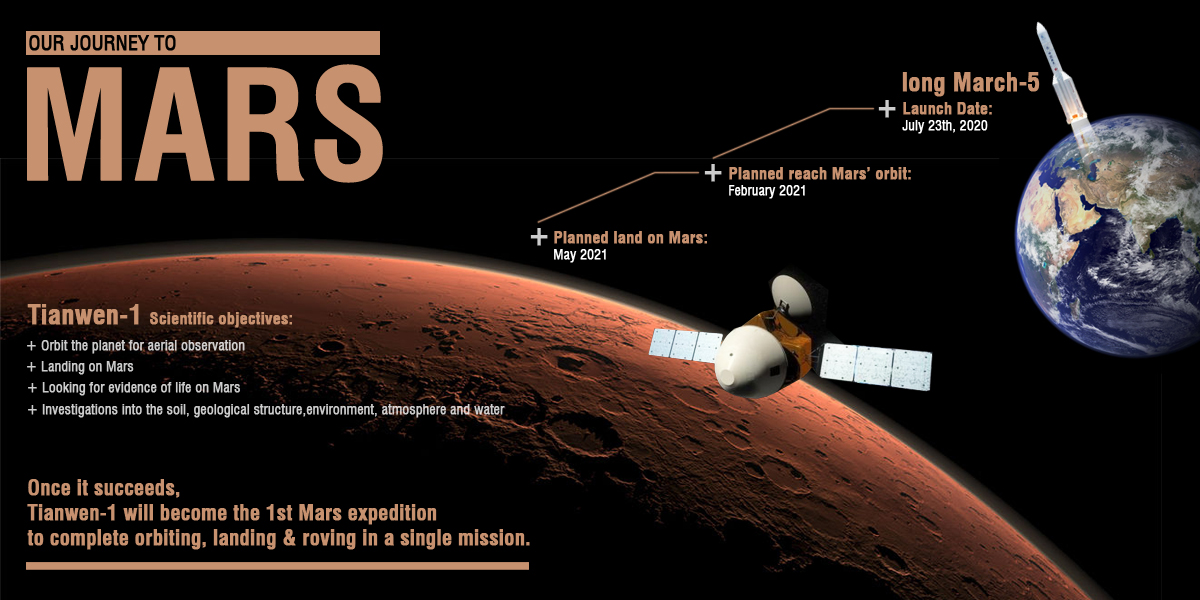China has announced the successful launch of its Long March-5 carrier rocket from the Wenchang Space Launch Center – a multi-stage vehicle carrying the Tianwen-1 Mars probe into the red planet’s orbit.
The heavy-lift rocket, which took off on July 23, features a set of polymer static firing skirts additively manufactured on a Farsoon HT1001P 3D printer. Long March is expected to reach Mars’ orbit in Feb 2021, with the probe touching down sometime in May.

3D printing the Long March-5
The 57m long powerhouse is designed to carry 25 tons of payload into low earth orbit, or 14 tons into geo-synchronous transfer orbit. It has a diameter of 5m and features four 3.35m boosters. It’s a multi-stage vehicle, meaning the boosters separate once they have expended all of their fuel and carried the payload out of Earth’s gravitational pull.
The 3D printed firing skirts are absolutely crucial to the separation process. They make up a part of the cylindrical inter-stage structure that lines the 15.7m circumference of the rocket. They provide a temporary structural medium between the stage and the aft support ring to protect the unlocking device, enabling the payload to separate safely from its boosters.
Seeing as the skirts needed to be very durable in demanding operating conditions, the Long March engineers eventually settled on Farsoon’s high-performance FS 3300PA material – a PA1212-based powder with excellent mechanical properties. To manufacture the end-use parts, the engineers also opted for Farsoon’s largest polymer SLS system, the HT1001P with its 1000 x 500 x 450mm build volume.
The larger skirt structure was broken down into 50 separate 370 x 100 x 125mm parts, and was printed in just 48 hours. Once assembled, the circular skirt had excellent toughness, ease of assembly, and great post-processability for water-proofing and salt-spraying.

Space exploration in 2020 and beyond
Since launching, the Tianwen-1 probe has already successfully carried out its first orbital correction. It has been travelling for more than 340 hours, and is currently about 3 million kilometers away from Earth. According to the China National Space Administration, Tianwen-1 will be the first Mars expedition to complete orbiting, landing, and roving all in a single mission – cementing additive manufacturing in the history books of space exploration.
China’s not the only one with its eyes on the red planet, either, as NASA recently launched its Mars 2020 Perseverance rover on July 30. Accompanying it is the new Mars Helicopter, a technology demonstration testing the first powered flight in Mars’ atmosphere. The duo, expected to land on Feb 18, will seek signs of ancient life while collecting rock and soil samples for examination purposes back here on Earth.

China previously used its Long March-5 rocket to launch a “space 3D printer” and 3D printed CubeSat deployer into low earth orbit back in May. As a result, it was able to complete its first set of 3D printing tests in the microgravity of space – two 3D printed carbon fiber parts.
Elsewhere, in Germany, aerospace firm ArianeGroup recently tested its first entirely 3D printed combustion chamber. The chamber was successfully fire tested 14 times between 26 May and 2 June, and will eventually be used in the development of low-cost rocket engines.
Subscribe to the 3D Printing Industry newsletter for the latest news in additive manufacturing. You can also stay connected by following us on Twitter and liking us on Facebook.
Looking for a career in additive manufacturing? Visit 3D Printing Jobs for a selection of roles in the industry.
Featured image shows the Long March-5 rocket. Photo via Xinhua News Agency.


